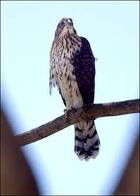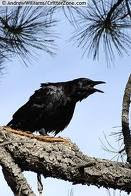
Yesterday, Wednesday and time for my nature walk to once again coincide with some serious New England weather. However, we have established that the ladies I walk with are a hearty bunch, and in my defense, it wasn’t snowing yet when I headed to work. By the time we gathered it was coming down in serious, fill-up-all-the-cool-tracks-I-had-seen-that-morning fashion. At this point we probably should have cancelled. But, for the last two mornings I had been checking out this wetland behind an old fish hatchery near my home that had an abundance of Mallards, geese, a few Green Winged Teals, and shockingly, not one, but three Woodcocks. They caught my eye because one doesn’t expect a small plump bird with the unmistakable long bill of a Woodcock to be spotted here in January.

Yet there they were working the edge of this wetland, the terminus for a brackish tributary off the larger salt water Scorton Creek. Of course I had to tell everyone, had to gather anyone who was willing and drag them out to see for themselves. I even double-checked the area that morning, and although there weren’t three this time, one was there standing pretty close to an observation spot. Oh boy, oh boy, oh boy! But of course, nature doesn’t just stay planted in the same spot for my convenience and now, by the time I brought them there, with snow coming down like gangbusters, they were nowhere to be found. Neither were the Green Winged Teals, or the Golden Crowned Kinglet that had flitted along the path in the morning. All, wisely under the cover of some pine tree or in the case of the Woodcocks back among the protective tangle of vines and shrubs along the water’s edge. Not getting snowed on as we were.
But bless my ladies a thousand times over, as much as I apologize they graciously point out that the snow is beautiful, as it was, falling in large conglomerate flakes, and every branch, and every nest in the bushes was capped with snow. Lovely.

The Mallards were there in force, and they kept being routed out inadvertently by us, lifting straight up from among some overgrown fish hatchery runs. And where they had settled on the snow was a stampede of duck tracks. The mallards that stayed in the creek were all sporting a white patch of snow on their back, something else I realized I had never seen before, so that was noteworthy I suppose.
Also, in a “saving the day” manner, a local historian whose family used to own this property, as in REALLY used to own it, for the last 300 yrs. have owned it, spotted our van and came down to see what we could possibly be up to in this weather. John Cullity is the keeper of all knowledge for the history of this hatchery, and for this entire area really, and bless him, he was willing to do an impromptu history lesson for us right there in the sifting snow under the pines. He told us how it once was just a series of fast flowing springs that drew rich people from Boston to come fish for trout. Then in the early 1900’s some runs were built to raise the trout and according to John, the hatchery was in operation from 1909 to the 1990’s! Now the artesian wells still bubble up keeping the water moving. Cattails, a disappearing desirable plant around here, grow thickly in some of the runs and overgrown pussy willows line the edges. It has a fast moving creek with modest waterfalls that used to turn the mill that was here and all in all, even without the spotting of the mythical Woodcock, it DID make for a lovely, if somewhat cold and damp, day.
By the way, looking into Woodcocks that winter here, it is rare, but not unheard of. As with many birds there is that small renegade group that would rather take their chances sticking it out than doing the popular thing of flying south. Rather like those crazy people that won’t leave their houses in a hurricane. It’s a gamble. But then migrating is a gamble too. I just hope that working the edge of this unfrozen creek and others will provide them with all they need to make it through the next few months. And you know I will be down there checking again, and possibly lucky enough to see them, until, of course, I try to show them to someone else. Then like CIA spies they will, no doubt, melt into the brush again.































